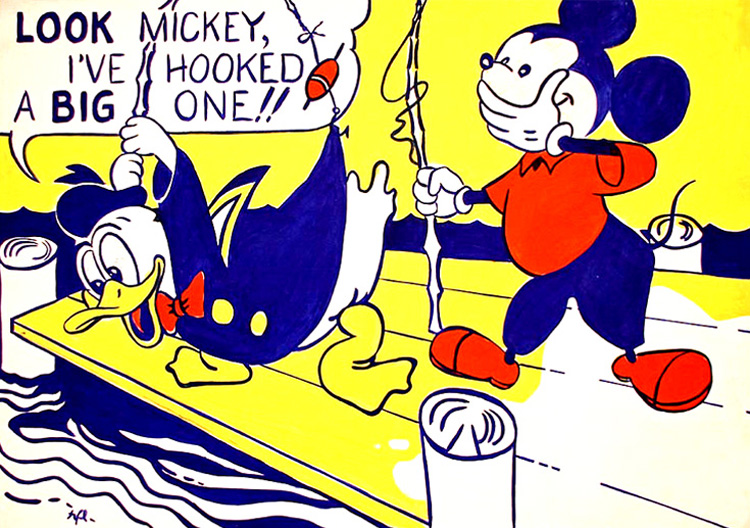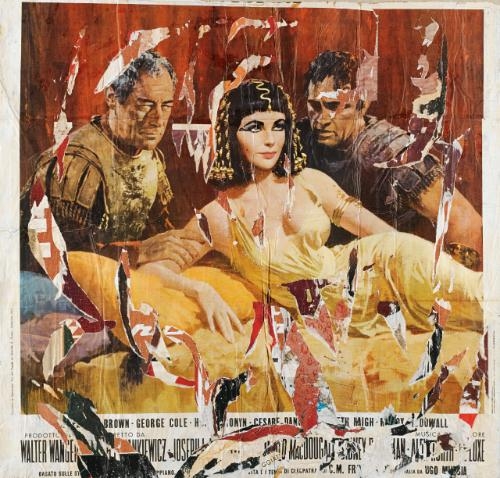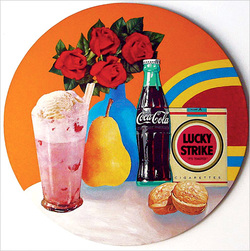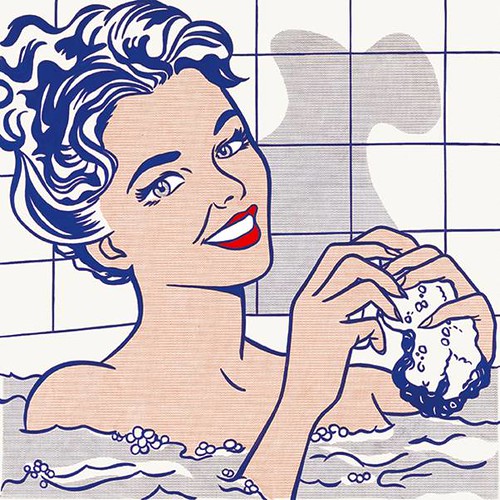From June 10th to september 14th 2014, an exhibition called "Pop Art Myths" was held here in Madrid.
It took place in the famous Thyssen-Bornemisza museum on the Paseo del Prado, on the ground floor in the Temporary Exhibition Room and was sponsored by the foundation BBVA in order to show the the birth and the progressive evolution of this very particular artistic current that appeared in the middle of the last century and was based on the popular imagination by using of references from television and comics.
Pop art has the advantage of being accessible and comprehensible to all public and doesn't discriminate classes and cultures insofar as anyone is able to find themselves through these simplistic works. However, it's also this simplicity that disturbs the "purists" of the time that would refer to more classical styles such as Surrealism
This exhibition gathers lots of artworks from various international artists that had an impact on their time, the exhibition concerned is actually very well structured in the way that the rooms are divided according to the type of art that is used by the artist, like each areas has their own them and method.
For instance the first area focuses on the collage and advertising comics, which are probably the most popular form of Pop Art, starring some famous Disney characters like Mickey Mouse or Donald Duck. Roy Lichtenstein and Andy Warhol was two major figures of the Pop Art wave and tented to use this kind of technical
Roy Lichtenstein, Look Mickey, 1961
The Emblem, a principle which consists in putting forward objects derived from our daily consumption through the obvious representation of famous brand such as Coca-Cola, Heinz or Campbell, this movement in particular could be interpreted as a criticism of our consumer society.
Andy Warhol, Big Torn Campbell's Soup Can 1962
The Myth is another popular trend also specific to pop art was to stage celebrities while playing on their physique or on the scenery around them in order to venerate them, emphasize their myth and to place them in quasi legend.
Mimmo Rotella, Cleopatra, 1963
By the way, the Myth can be related to The Portrait in the way that in this latter, artists represent themselves as an external character by giving a genre that doesn't actually correspond to any reality just like a false representation of themselves.
Landscapes interiors and Still Lifes which can simply be considered as modern still lifes of the 20th century by replacing the traditional fruit basket with everyday objects, often consumable, always with this idea to put forward brands that invade our lifestyle.
Tom Wesselman, Still Lifes#34, 1963
Pop Art has also experienced the wave of sexual freedom that touched the whole world especially the USA in the early 1960s which gave birth to the Urban Erotism that makes woman appear in her environment of life, often at home, as an object of desire and a real sexual symbol.
Roy Lictenstein, Woman in Bath, 1963
Pop art was also directly inspired by the striking fact of his time with the History Painting that was committed against conflicts that affected certain countries or by contesting political decisions while staging famous leaders such as Kennedy or Nixon.
Robert Rauschenberg, Retroactive, 1963
To be honest, I never felt interesting in Pop Art that I already heard about because on the one hand, the aim of the movement seems to be socially speaking a great advance in the way that it broke the barriers concerning some eventuals art rules, on the other hand even the fact that I feel pretty close to art in general I definitely don't like the aesthetic that it offers. Actually, I don´t think that I´m a narrow-minded person especially regarding the art universe, for instance the abstactive side of Pop Art doesn´t disturb me at all but it´s probably more a question of simplicity in the way that I´ve got the impression that everybody can become a Pop Art artist, and this was also naturally the major aim, for example with the collage which is basically the most accessible technique of Pop art such as the comics that I find perharps too much dared.
However, I must admit that the exhibition itself was actually pretty well done mostly because it proposes various types of styles but concerning the artists I personally found that it showed may be to much works done by the same artists, in the way that always the same names were repeated such as Wahrol and Lictenstein but in parallel, I'm persuaded that lots of other less famous artists would be interesting to know because even before I saw the exhibition, I already knew lots of painting, so that's an other point that have disturbed me.
Anyway, I´ve decided to analyse one of the painting that was presented which I found pretty interesting because it stages two differents versions of the same painting from very far eras.
Andy Warhol, Details of Renaissance Paintings, 1984
Sandro Boticelli, Birth of Venus, 1485
So, we quickly understand that Warhol was clearly inspired from the original Venus from Boticelli but even that facial features seem to be the same, Warhol decided to totally change the original one by simplifying her face but mostly by totally changing coulours that result to the impression of an other character.
But artistically speaking, the most revelant thing is that the original Venus was painted with the very common style of the time, that is to say the Realism in order to give us a feeling of reality and allows the public to see the Venus more as a woman than a divinity contrary to this modern version that tends to give us the impression of a character completely inhuman, emphasizing her goddess status, moving us away from the original aim.
Actually, the most important aspect of the question is the way Warhol managed in staging a painting, from an aesthetic point of view, relatively close to the original one, but in parallel with a totally different second meaning because we definitely lost the human side of Venus. Also because before she was represented between an angel and a woman as if she embodied both at once, but this time, she is clearly isolated which leaves no place for an eventual second nature.
Moreover, there is also this unusual color palette that takes us away from any notion of reality and which even gives the feeling that the drawing is simple.
To conclude, I must admit that even if I do not like the style of pop art in general, I appreciate the contrast of colors that transports us into another world and let precisely express our imagination regarding a possible personal interpretation of the character.
Actually, the most important aspect of the question is the way Warhol managed in staging a painting, from an aesthetic point of view, relatively close to the original one, but in parallel with a totally different second meaning because we definitely lost the human side of Venus. Also because before she was represented between an angel and a woman as if she embodied both at once, but this time, she is clearly isolated which leaves no place for an eventual second nature.
Moreover, there is also this unusual color palette that takes us away from any notion of reality and which even gives the feeling that the drawing is simple.
To conclude, I must admit that even if I do not like the style of pop art in general, I appreciate the contrast of colors that transports us into another world and let precisely express our imagination regarding a possible personal interpretation of the character.









OK!
ReplyDeleteThis is a very attractive-looking post (to be completed)
This looks attractive enough and quite seriously done, Leon.
ReplyDelete